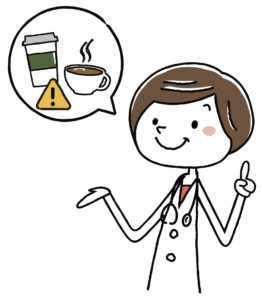** Does the Communications Decency Act protect websites from cancelling users – and will it survive being cancelled itself? **
Uncategorized
Supply Chains and the Block Chain
By: Brent E. Johnson

We have blogged in the past about laws relating to disclosure of modern slavery and child labor in supply chains. Developing robust compliance and transparency management systems is challenging as modern slavery and child labor flourish in the dark corners of supply chains – in nations that are least developed, that lack stable governments, and where large populations are on the move – fleeing war or poverty. It is in these places where traffickers can exploit vulnerable migrants. The most recent estimates of the scope of the problem are staggering: 40 million adults are currently in some form of slavery and 152 million children are in child labor. The profits from modern slavery are estimated at $150 billion per year.
Some companies are turning to block chain technology to help solve these supply chain issues, i.e. the technology that is used to authenticate cryptocurrency transactions. This same technology is now being utilized to check all the links in a diverse and global supply chain. IBM has created its Food Trust network, and after 18 months of testing, it’s blockchain-based food traceability platform is now live for global use by retailers, wholesalers and suppliers across the food ecosystem. The Company is working with major food retailers and producers Nestle, Kroger, Tyson Foods, and Unilever. Another major player in blockchain systems (Provenance) has developed a blockchain tool to track the supply chain of fisheries – combatting illegal fishing.
Technologists are hopeful that using blockchain in the battle to end modern slavery could prove as successful as it has in managing cryptocurrency. For example, the blockchain would allow a unique data identifier to be linked to individuals making that individual visible and traceable, that “smart contracts” could create a transparent (and unalterable) record of wages, hours, and that even payment could be made through digital wallets – so that payments at any level could be tracked and traced.
While to many “blockchain” is an unknown quantity, over time it may become as ubiquitous as the internet itself. Just as the connected web has opened the world, the blockchain has the potential to transform global supply chains – shining light into the far corners where human traffickers and unscrupulous middlemen operate.
Lawmakers Fail to Fund Safe Cosmetics Program Expansion
By: Brent E. Johnson

California enacted the Safe Cosmetics Act (CSCA) (Cal. Health & Safety Code § 111791, et seq.), which took effect in 2007. The Act requires the manufacturer, packer, and/or distributor named on a cosmetic label provide the California Department of Public Health (CDPH) a list of all ingredients known or suspected to cause cancer or developmental or other reproductive harm. § 111792 (a). There is no private attorney general provision (so it is not something the Plaintiff’s bar has been interested in) – and while the Attorney General’s office can impose a fine on manufacturers of $1,000 per day (see § 111855), the CDPH office that administers the program has been severely underfunded and with few exceptions has not pursued enforcement actions.
This has turned the CSCA into somewhat of a “voluntary” disclosure program. While many companies have reported chemicals in their products, many have not. And while there are 900 + reportable chemicals, the vast majority of listings are for just one chemical (titanium dioxide).
Advocacy groups pushed hard for a proposal that would have boosted CSCP funding dramatically during the 2018-2019 fiscal period. Reports from the California’s Senate and Assembly budget committees indicated that the increases was initially approved – including a $1.5m appropriation, which would have gone toward (amongst other things) addressing noncompliance. However, the funding provision ultimately was left out of the $200 billion budget approved by lawmakers and enacted on June 27, 2018.
California Court Does Not Side With Coffee
** Starbucks and other Coffee Makers Lose Latest Phase of Prop 65 Acrylamide Warning Case **
By: Brent E. Johnson

Background: Acrylamide is a chemical compound first isolated in laboratories in the 1950’s. Since its discovery, it has been used in many industrial applications, such as in the manufacture of polymers, in papermaking, ore processing, oil recovery, and in the manufacture of permanent press fabrics.
Acrylamide was listed by OEHHA as a chemical known to the State of California to cause cancer in 1990 based on studies that showed it produced cancer in laboratory rats and mice. In 2011, it was added to the reproductive and developmental harm list following studies of laboratory animals that showed effects on the growth of offspring exposed in utero as well as genetic damage.
Apart from its industrial uses, in 2002 acrylamide was discovered in foods – in particular starchy, carbohydrate rich plant based foods. The chemical appears to be created when these foods are roasted or fried at temperatures higher than 248 °F – but not in food that had been boiled or steamed. Further, acrylamide levels seem to rise as food is heated for longer periods of time, although researchers are still unsure of the precise mechanisms by which acrylamide is formed. It has been detected irrespective of whether the food is cooked at home, by a restaurant or by commercial food processors and manufacturers. All the good stuff is implicated – french fries, potato chips, other fried and baked snack foods, coffee, roasted nuts, breakfast cereals, crackers, cookies and breads. At present the Prop 65 No Significant Risk Level (NSRL) for acrylamide is 0.2 µg/day. Cal. Code Regs. tit. 27, § 25705 (c)(2).
In 2005, California attorney general Bill Lockyer filed a Prop 65 lawsuit against four makers of French fries and potato chips – H.J. Heinz Co., Frito-Lay, Kettle Foods Inc., and Lance Inc.. People of the State of California v. Frito-Lay, Inc. et al., Case No. BC338956 (Cal. Super. Ct. 2005). The lawsuit was settled in 2008, with the food producers agreeing to reformulate, cutting acrylamide levels to 275 parts per billion (thereby avoiding a Prop 65 warning label). The companies also agreed to pay a combined $3 million in civil penalties.
It was not until 2010 that a private attorney general filed a Prop 65 complaint against the major coffee sellers in California. A number of similar cases were filed and ultimately consolidated in Los Angeles County Superior Court – Council for Education and Research on Toxics v. Starbucks Corp. et al., No. BC435759, and Council for Education and Research on Toxics v. Brad Barry Co. Ltd. et al., No. BC461182. In all, the consolidated litigation involves more than 70 companies including grocery stores, coffee companies, food manufacturers and big-box retailers, such as Whole Foods Market, Trader Joe’s Co., Peet’s Coffee & Tea Inc., Nestle USA Inc., Costco Wholesale Inc. and Wal-Mart Stores.
The first phase of the trial took place in 2014, with a bench trial on several affirmative defenses, including whether acrylamide posed “no significant risk.” Judge Berle ruled in favor of Plaintiff at this phase, rejecting Defendants’ arguments that the level of acrylamide in their coffee products posed no significant risk because a multitude of studies show that coffee consumption does not increase the risk of cancer. The court ruled that the studies assessed the effects of coffee generally, as opposed to the presence of acrylamide in the coffee and were therefore not persuasive. Defendants’ argument that requiring them to post a Prop 65 warning amounted to unconstitutional forced speech was also rejected.
The second phase of the bench trial was held in September of 2017. Several of the defendants settled on the eve of trial, among them were BP, which operates gas stations and convenience stores ($675,000 + warning label); Yum Yum Donuts Inc. ($250,000+ warning label) and 7-Eleven stores ($900,000 + warning label). Starbucks did not settle, although it did begin posting Prop 65 notices in its stores, presumably to limit civil penalties were it unsuccessful at trial.
At the September 2017 trial, Defendants focused their trial strategy on:
- Code Regs. tit. 27, § 25703 (b)(1), which exempts from the normal risk level circumstance where the “chemicals in food are produced by cooking necessary to render the food palatable or to avoid microbiological contamination.” At trial, experts for the defendants testified that there is no commercially viable way to reduce acrylamide in coffee by some other cooking method.
- If § 25703 (b)(1) applies, the statute allows for a higher “alternative risk level” (i.e. not the NSRL of 0.2 µg/day) to apply to chemicals produced in the process of cooking foods if “sound considerations of public health” justify it. As to the appropriate risk level posed by drinking coffee, Defendants’ experts pegged it at up to 19 µg/day of acrylamide in coffee over a lifetime, and otherwise testified that the average person’s exposure to acrylamide in coffee is ten times less. Defendants’ experts also testified that studies found no increased risk of cancer for coffee drinkers, and to the contrary, evidence suggested that moderate coffee consumption is associated with a reduced risk of certain chronic diseases, including certain cancers.
On March 28, 2018, Judge Berle issued a statement of decision under Rule 632 (akin to a preliminary ruling) rejecting the coffee makers’ arguments. Council for Education and Research on Toxics v. Starbucks Corp. et al., No. BC435759 (Cal. Super. Ct. L.A. County March 28, 2018). Judge Berle noted that Prop 65 contemplated an alternative risk level if “public health” justified it. Id. ¶¶ at 75 – 81. But he found that the expert evidence did not persuade him that drinking coffee was strictly speaking a “public health” concern, i.e. that coffee confers a particular benefit to human health. On that basis, the alternative significant risk level defense failed as a threshold matter. Under California procedure, the Defendants can object to these preliminary findings, but it is uncommon for a statement of decision to not ultimately be entered as the judgment. The judge can now set another phase of trial to consider potential civil penalties – up to $2,500 per person exposed each day. In the abstract, that could calculate out to be an astronomical sum, although this preliminary decision may push the parties to the settlement table. We will see who the next target is – acrylamide is after all not just in coffee – but in many cooked and processed foods.
Spokeo Is Alive and Well in the Ninth Circuit – it’s a FACT[A]
** FACTA Claims Rejected by Ninth Circuit for Lack of Injury ** (more…)
Pokemon GMO
** Update on the National Bioengineered Food Disclosure Standard Law **
By: Brent E. Johnson

By a stroke of the pen, President Obama put to rest for all time (by “all time,” we mean a decade) the brouhaha over labeling foods containing GMO ingredients. By signing the National Bioengineered Food Disclosure Standard law on July 29, 2016, the President and Congress proclaimed to the citizenry that GMO labeling is important — but not so important that the labels actually have to be seen. How did we get to this point? A brief history is in order.
When one of the editors of this blog watches Netflix with his English Bulldog, he is enjoying the companionship of a genetically modified organism (“GMO”). Long before the first GMO food – the Flavr Savr tomato — hit grocery store shelves in 1994, humans were engineering crops and livestock the old fashioned way – selective breeding. Modern GMOs, of course, differ from those derived from selective breeding. They are developed on a molecular level – a specific gene from a donor organism that expresses a desirable trait is inserted into the genome of the target organism to give the latter that same trait. While consumer organizations and environmental activists have sounded the tocsin (or toxin) over GMOs since the beginning of bio-engineering, the federal government – particularly the FDA – has not been alarmed.
Two years before Flavr Savr, the FDA published its “Statement of Policy: Foods Derived from New Plant Varieties.” In this document, the FDA reminded the public that a food additive must be approved prior to use unless it is “generally recognized as safe” (GRAS). The FDA concluded that, while a plant gene inserted into another plant is an additive, generally that gene is GRAS. “The agency is not aware of any information showing that foods derived by these new methods differ from other foods in any meaningful or uniform way, or that, as a class, foods developed from the new techniques present any different or greater safety concern than foods developed by traditional plant breeding.” Based on that logic, the FDA’s regulations for plant GMOs are the same as those for traditional foods with the exception of a voluntary (“recommended”) consultation procedure with which developers of GMO-containing foods typically comply. (Note that the USDA’s Animal and Plant Health Inspection Service plays a limited regulatory role with regard to GMOs that pose a risk to other plants or animals and the EPA regulates GMOs that are bio-engineered to produce a pesticide – for example, the infamous, but unblemished, Bt-corn.)
In the 1992 Policy, the FDA eschewed requiring food companies incorporating plant GMOs to label their products as such under the Federal Food, Drug, and Cosmetic Act because “the agency does not believe that the method of development of a new plaint variety (including recombinant DNA techniques) is normally material information within the meaning of 21 U.S.C. 321(n).” The FDA has not deviated from this position in the past quarter decade. The agency’s website has a page directed to consumers which rhetorically asks, “Are foods from GE plants safe to eat?” The response is, “Yes. Credible evidence has demonstrated that foods from the GE plant varieties marked to date are as safe as comparable, non-GE foods.”
The FDA’s refusal to mandate that food companies label their products containing GMOs does not mean that consumers who care about such things have been stymied. In 1990, Congress enacted and George Herbert Walker Bush signed the Organic Foods Production Act, which required that the USDA develop national standards for organic products. Ten years later, the USDA issued its final rule establishing the National Organic Program (NOP), which governs both fresh and processed food products, including crops and livestock. The “USDA Organic” label means many things under the NOP — but one of them is no genetic engineering. GMOs are prohibited in organic products as excluded methods of production. 7 CFR § 205.105. Therefore, a consumer that doesn’t want to ingest a GMO need only look for the “USDA Organic” label.
The NOP was not enough for Vermont. In 2014, Vermont enacted Act 120 – a manifesto against the federal government’s oversight of GMOs — that required labels on products containing genetically engineered ingredients. “[F]ood offered for sale by a retailer after July 1, 2016 shall be labeled as produced entirely or in part from genetic engineering if it is a product: (1) offered for retail sale in Vermont; and (2) entirely or partially produced with genetic engineering.” Act 120, § 3043. In addition, “a manufacturer of a food produced entirely or in part from genetic engineering shall not label the product on the package, in signage, or in advertising as ‘natural,’ ‘naturally made,’ ‘naturally grown,’ ‘all natural,’ or any words of similar import that would have a tendency to mislead a consumer.” Id.
The food industry went into an uproar over Vermont’s law because – given the realities of interstate commerce – companies would have to change their labeling nationwide to satisfy the demands of Vermont. While manufacturers have had to bend to the legislative will of California from time to time (“Made in the USA”/Prop 65), it’s quite another thing to answer to Vermont.
Due, in part, to persistent lobbying, Congress enacted the Bioengineered Food Disclosure Standard law just in time to pre-empt Vermont’s organic labeling law from going into effect. The law requires that the USDA “establish a national mandatory bioengineered food disclosure standard with respect to any bioengineered food and any food that may be bioengineered” by July 2018. Therefore, GMO labeling will be required nationwide sometime after 2018. But because Congress clearly believes that this law is a solution in search of a problem, the statute has a unique labeling provision that “require[s] that the form of a food disclosure under this section be a text, symbol, or electronic or digital link . . . with the disclosure option to be selected by the food manufacturer.” What does this mean? Simply put, food companies will have the option of either a product label with a bar code accompanied by the words, “scan here for more food information” or a toll-free telephone number with “call for more food information.” In short, an actual GMO disclosure on the label is not required. Consumers who care will roam supermarket aisles – smart phones in front of their faces – scanning bar codes to find their non-GMO groceries like Pokemon Go zombies looking for Poke Balls.
No Standing for NFL Superbowl Ticket Class Action Representatives

** Third Circuit Affirms That Purported Class Representative Super Bowl Ticket Buyers Do Not Have Standing To Sue For NFL Ticket Practices That “Forced” Them to Buy Scalped Secondary Market Tickets **
By: Brent E. Johnson
In 2014 a purported class action representatives purchased tickets to the 2014 Super Bowl held at the Meadowlands Stadium in New Jersey – at a price of $2,000.00 each (even though their face value was around $800.00). Finkelman v. Nat’l Football League, No. 15-1435, 2016 WL 158507, at *1 (3d Cir. Jan. 14, 2016). Plaintiff alleged that the NFL distributed 99% of tickets to teams, sponsors and the media and that the shortage of general public tickets caused the inflated price. Id. He further alleged that New Jersey’s Consumer Fraud Act (N.J. Stat. Ann § 56.8-35.1) in particular the provisions that make it unlawful to withhold more than 5% of tickets to an event from the general public – was violated by the NFL’s ticket allocation practices. Id. Plaintiff sued on the theory that this alleged violation of New Jersey law caused him to miss out on a face value ticket and thus forced him onto the inflated secondary market – with the difference between the two prices being his “injury.” Id. On the NFL’s motion to dismiss, however, the District Court agreed that there was no Article III standing. Id. The Third Circuit affirmed – outlining that Article III requires a fairly traceable injury – i.e. “but for” causation – and the court could not say that but for the NFL’s restrictions Plaintiff still would have been able to buy a face value ticket. Indeed, the court said that “demand for Super Bowl tickets so far exceed
s supply that [Plaintiff’s] probability of obtaining a face-price ticket in a public sale would have been effectively nil regardless of the NFL’s ticketing practices.” Id. at *8. Further, the court disagreed that it could determine whether the high market price was caused by the NFL – “[t]o state the problem succinctly: we have no way of knowing whether the NFL’s withholding of tickets would have had the effect of increasing or decreasing prices on the secondary market . . . [w]e can only speculate—and speculation is not enough to sustain Article III standing.” Id. at 10. A second purported class representative did not buy a ticket to the Super Bowl – his allegation was that he was dissuaded from doing so because of the high resale price – and that lost opportunity was his “injury”. Id. at *6. This position on standing was treated with greater incredulity by the Third Circuit – the court concluding that Plaintiff’s lack of standing is not a hard call: “[i]f the Court were to credit [plaintiff’s] concept of injury, everyone who contemplated buying a Super Bowl ticket but decided against it would have standing to bring a claim under the Ticket Law. Article III is simply not that expansive.” Id. With no standing – to either purported class representative – the Third Circuit affirmed the dismissal.

